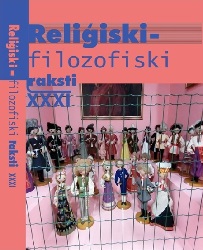Between the Allowed and Forbidden – Eastern Spiritual Movements in Latvia (1960–1980)
Between the Allowed and Forbidden – Eastern Spiritual Movements in Latvia (1960–1980)
Author(s): Solveiga Krūmiņa-KoņkovaSubject(s): Civil Society, Social history, Politics and religion, Post-War period (1950 - 1989), History of Communism, Sociology of Religion
Published by: Latvijas Universitātes Filozofijas un socioloģijas institūts
Keywords: Eastern spiritual movements; Soviet spirituality; Yoga; Sathya Sai Baba Society; Buddhism;
Summary/Abstract: The article examines the existence, emergence and adaptation of Eastern spiritual ideas in Soviet Latvia in the 1960s-1980s. The adepts of several Eastern spiritual movements, such as the Yoga movement, continued their practices underground, thus maintaining the bond with the tradition of the 1920s-1930s. In the 1970s–1980s, some new movements, such as the Sathya Sai Baba Society, emerged in the cultural space of Soviet Latvia. In response to the growing interest in Eastern spiritual teachings, the Soviet regime imposed strict limitations regulating to what extent such interest was permissible and did not harm Soviet ideology and life. For example, Hatha yoga was allowed only as a part of physical culture. At the same time, there was an active spiritual quest in the private space of Soviet citizens, manoeuvring within the permitted limits or figuring out ways to ‘legally’ circumvent them.
Journal: Religiski-filozofiski raksti
- Issue Year: XXXI/2021
- Issue No: 3
- Page Range: 271-286
- Page Count: 16
- Language: English

